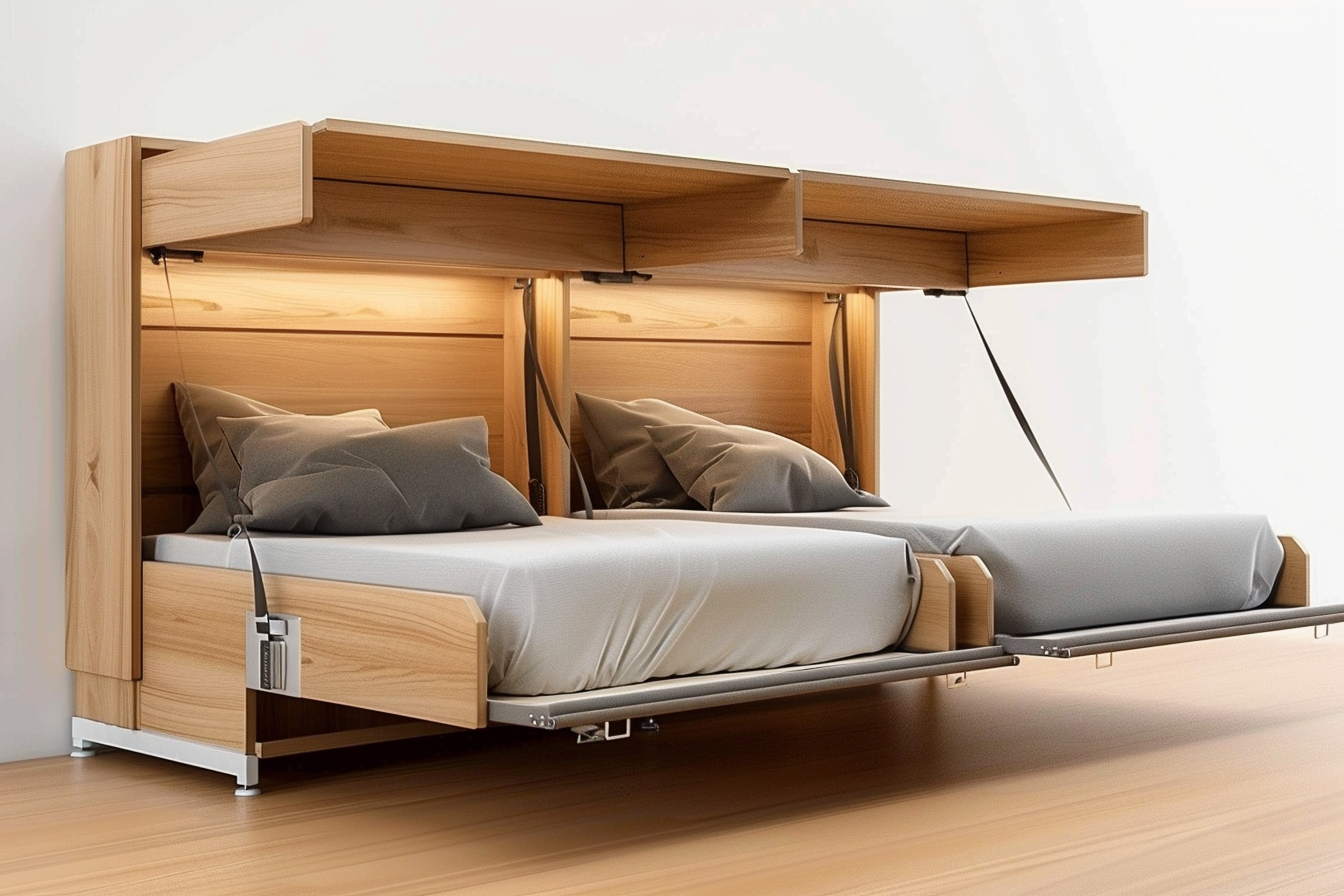Foldaway Beds: Space-Smart Solutions for Modern Small Homes
Struggling to make the most of limited square footage? Folding beds deliver comfortable sleep without sacrificing living space. This guide explores space-saving folding beds—Murphy, cabinet, rollaway, and sofa types—covering features, installation, maintenance, pricing, and smart accessories to help you pick the best option for compact apartments and multi-use rooms.

Living in a compact apartment or a multifunctional room often means every square foot must pull double duty. Folding beds provide a practical way to reclaim floor space while maintaining a comfortable sleep setup. Modern foldaway designs have advanced beyond temporary cots to feature well-engineered mechanisms, integrated storage, and thoughtful extras that blend style with utility.
Space-saving advantages for compact living
Folding beds can dramatically expand usable area in small homes. When folded away, many models free up to 40 square feet—space that can be used for a home office, a workout zone, or extra living-room seating. Because contemporary fold-down beds are available in a variety of finishes and configurations, they can be integrated seamlessly into a room’s décor, letting a studio function as both a bedroom and a living area without feeling cluttered.
Beyond reclaiming floor area, folding beds make guest hosting simple and discreet. Instead of dedicating a room exclusively for overnight visitors, you can convert an everyday space into a comfortable sleeping spot when needed and hide it afterward, preserving the room’s primary purpose.
What to evaluate before you buy
Choosing the right folding bed depends on several practical considerations. Mattress quality and thickness determine sleep comfort; memory foam and hybrid mattresses typically offer better support in slim profiles than very thin innerspring alternatives. Assess the mechanism’s build quality—steel frames, reinforced hinges, and tested gas pistons tend to last longer and operate more smoothly.
Measure twice: check both the footprint when the bed is folded and its full dimensions when extended to ensure it fits without blocking doors, windows, or pathways. Review the manufacturer’s weight capacity and look for reliable locking systems that secure the bed in both stored and open positions to prevent accidental movement.
Other useful specs include mattress depth compatibility, mattress fastenings (to keep it in place when folded), and whether the design allows for a mattress of the firmness you prefer. If you plan to use the bed daily, prioritize sturdiness and ergonomics over purely cosmetic details.
Installation and upkeep
Installation varies by style. Wall-mounted Murphy beds typically require solid wall anchoring and precise alignment; while some homeowners with moderate DIY skills can handle fitted installations, many choose professional mounting to ensure safety and warranty compliance. Free-standing cabinet beds and sofa beds generally need less structural work, but still benefit from following manufacturer guidelines for assembly.
Routine maintenance helps prolong function and appearance. Periodically inspect hinges, springs, pistons, and locking hardware for wear or loosening and tighten or replace components as recommended. Lubricate moving parts with manufacturer-approved products if indicated. Clean surfaces and upholstery according to the care instructions—vacuum fabric to remove dust, wipe wooden or laminate surfaces with appropriate cleaners, and rotate or flip compatible mattresses to maintain even wear.
Popular folding bed types and price ranges
| Model Type | Average Price Range | Key Features |
|---|---|---|
| Murphy Wall Bed | $800-$3000 | Vertical fold, often includes cabinet storage |
| Cabinet Bed | $1000-$2500 | Horizontal fold into furniture-like casing |
| Rollaway Bed | $150-$500 | Portable, foldable frame with wheels for storage |
| Sofa Bed | $400-$2000 | Dual-purpose seating and overnight use |
Prices, rates, or cost estimates mentioned in this article are based on the latest available information but may change over time. Independent research is advised before making financial decisions.
Smart storage options and modern accessories
Manufacturers increasingly add value by combining foldaway beds with smart storage and tech-friendly features. Built-in shelving units, sliding drawers, and hidden compartments offer places for linens, books, and clothing, helping keep small spaces tidy. Integrated USB charging ports and power outlets cater to devices, while in-frame LED lighting improves nighttime usability and ambiance.
Customization is common: choose configurations with open shelving for display items or closed cupboards for a cleaner look. Some systems let you tailor storage sizes, shelf spacing, and finish options to match specific needs—ideal for those who want an optimized, multifunctional solution rather than a one-size-fits-all product.
Making the right choice for your lifestyle
To select the best folding bed, start by clarifying how you will use it. For occasional guests, a rollaway or inexpensive sofa bed might be sufficient. If the unit will be used nightly, invest in a sturdier Murphy or high-quality cabinet bed with a supportive mattress. Think about access and room flow—the bed must be easy to deploy and stow without moving other furniture.
Budget realistically: while cheaper models can save upfront costs, higher-end units often offer better warranty terms, stronger mechanisms, and more attractive finishes that can increase long-term satisfaction. Try to see models in person where possible to evaluate mattress comfort and mechanism smoothness.
Final considerations
Folding beds are a practical and elegant solution for maximizing small living spaces. By weighing mattress comfort, mechanical quality, dimensions, installation needs, and the value of integrated storage or tech features, you can pick a model that turns a compact room into a flexible, comfortable environment. Thoughtful selection and regular maintenance will ensure your foldaway bed remains functional and stylish for years to come.






